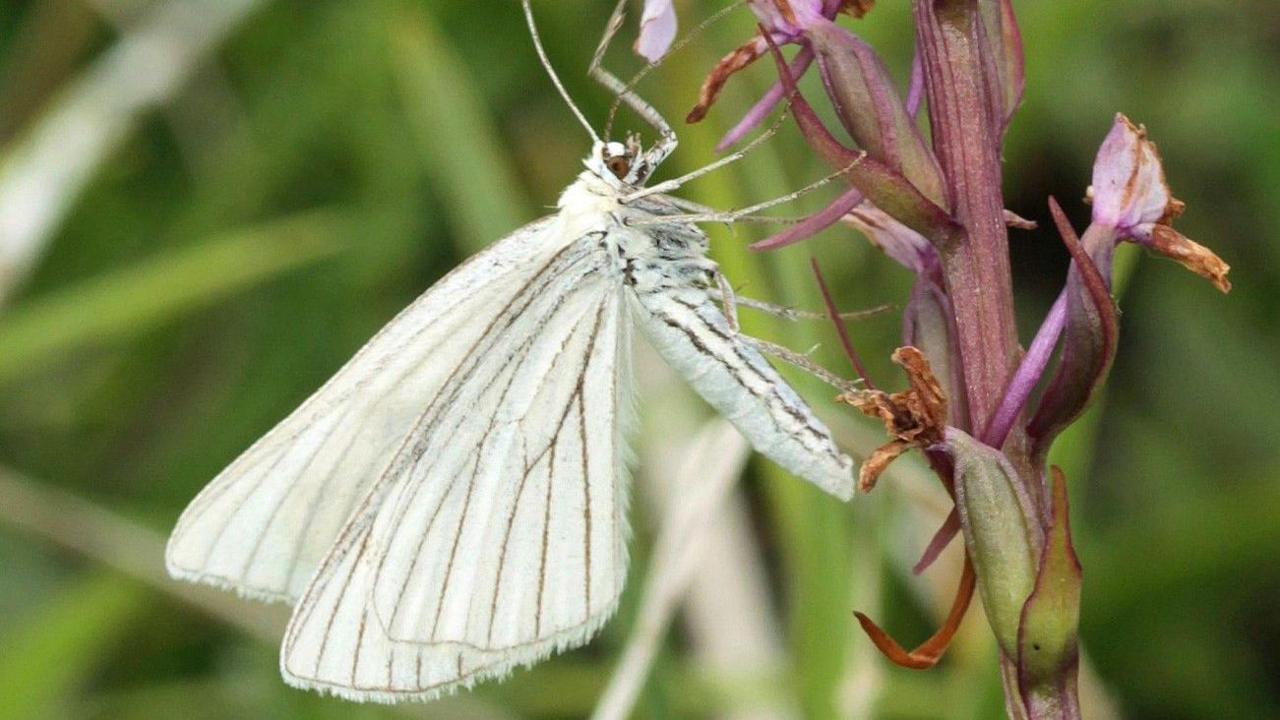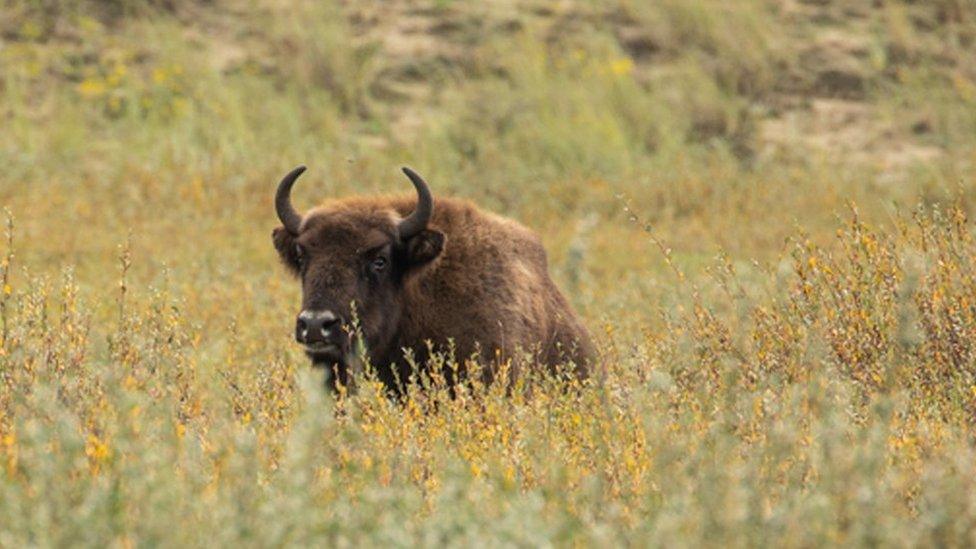Rewilding leads to bumper year for rare Kent moth

Black-veined moths are the same size as a butterfly
At a glance
Surveys counted a peak of 255 black-veined moths this summer
The moth was close to extinction in 1995
Farmers were encouraged to restore their fields so the moths could thrive
- Published
A critically-endangered moth indigenous to the east Kent countryside has had a bumper year after its habitat was restored by farmers.
In 1995, the black-veined moth was close to extinction due to the loss of their chalk grassland habitat in the Wye National Nature Reserve.
Natural England launched a project encouraging farmers to restore fields back to their natural form.
This year, surveys counted a peak of 255 moths, the highest number recorded since the project began.
Dan Turson, Natural England's farm adviser, said: "Farmers are leading nature recovery through long-term one-to-one advice and close working to create new wildflower grasslands at scale."
He said they were now seeing the results of the farmers' hard work.
Black-veined moths look like white butterflies patterned with distinctive black lines across their wings.
To survive, they need a mosaic of both tall tufts of grass and short wildflowers within the same field, making them much rarer than other insects that live in chalk grassland.
Follow BBC South East on Facebook, external, on Twitter , externaland on Instagram, external. Send your story ideas to southeasttoday@bbc.co.uk.
- Published30 June 2010
- Published9 October 2013
- Published10 July 2020
